On March 8, 2017, Vanity Fair Italia published a story I wrote on my life in Zambia. Many of my followers have written to me requesting I publish the original, before it was translated into Italian. Here it is:
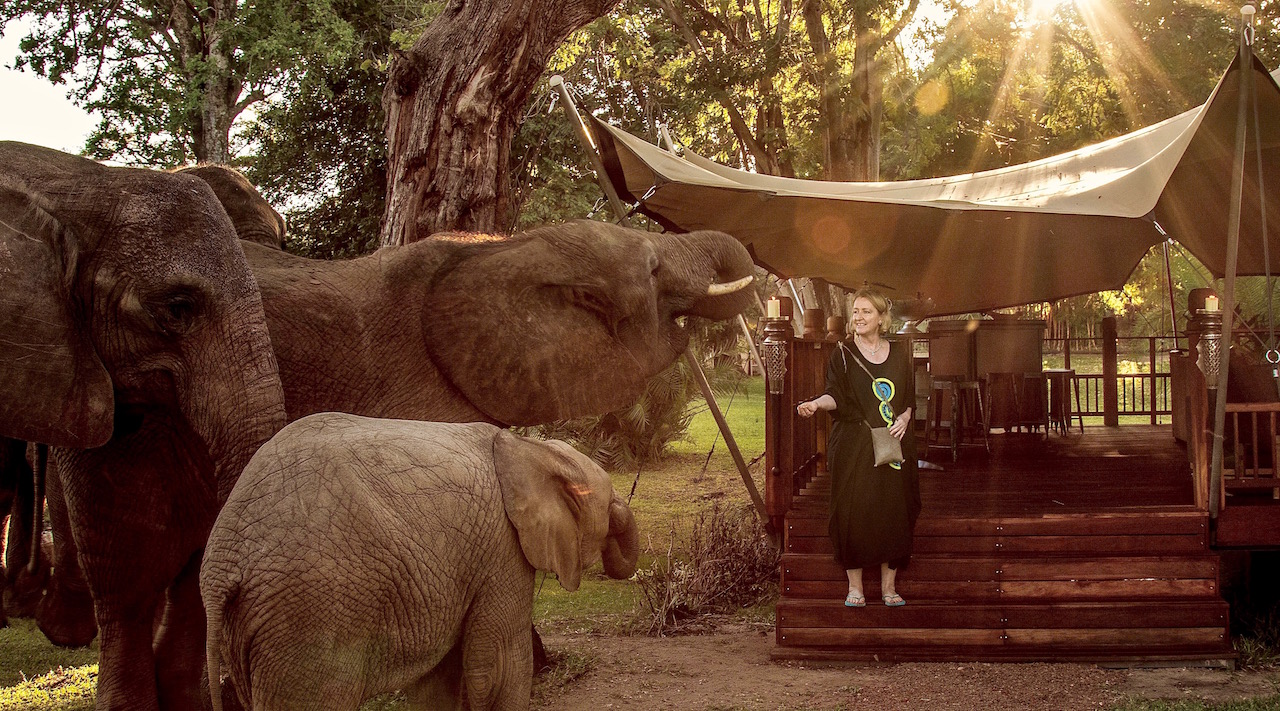
At the end of January 2010 a small elephant, all alone and judged to be under a year in age, tagged on to an artificial herd of rescued elephants being called in by their handlers after feeding on a nearby island in the Zambezi River, upstream from Victoria Falls in Livingstone, Zambia. Sekuti, as the baby was later named, assimilated well into his adopted herd, made up of hand-reared elephants who, apart from their offspring, had themselves been orphaned in droughts and culls in neighboring Zimbabwe decades before.
I spend most days with this herd of ten elephants. I am the chef de cuisine and manager at The Elephant Café, an exclusive tented restaurant built on a teak deck in the Zambezi River, which is the center point of the elephant sanctuary in which they live. It’s the only restaurant in southern Africa where customers can interact with African elephants while dining on fresh, locally-sourced and wild food.
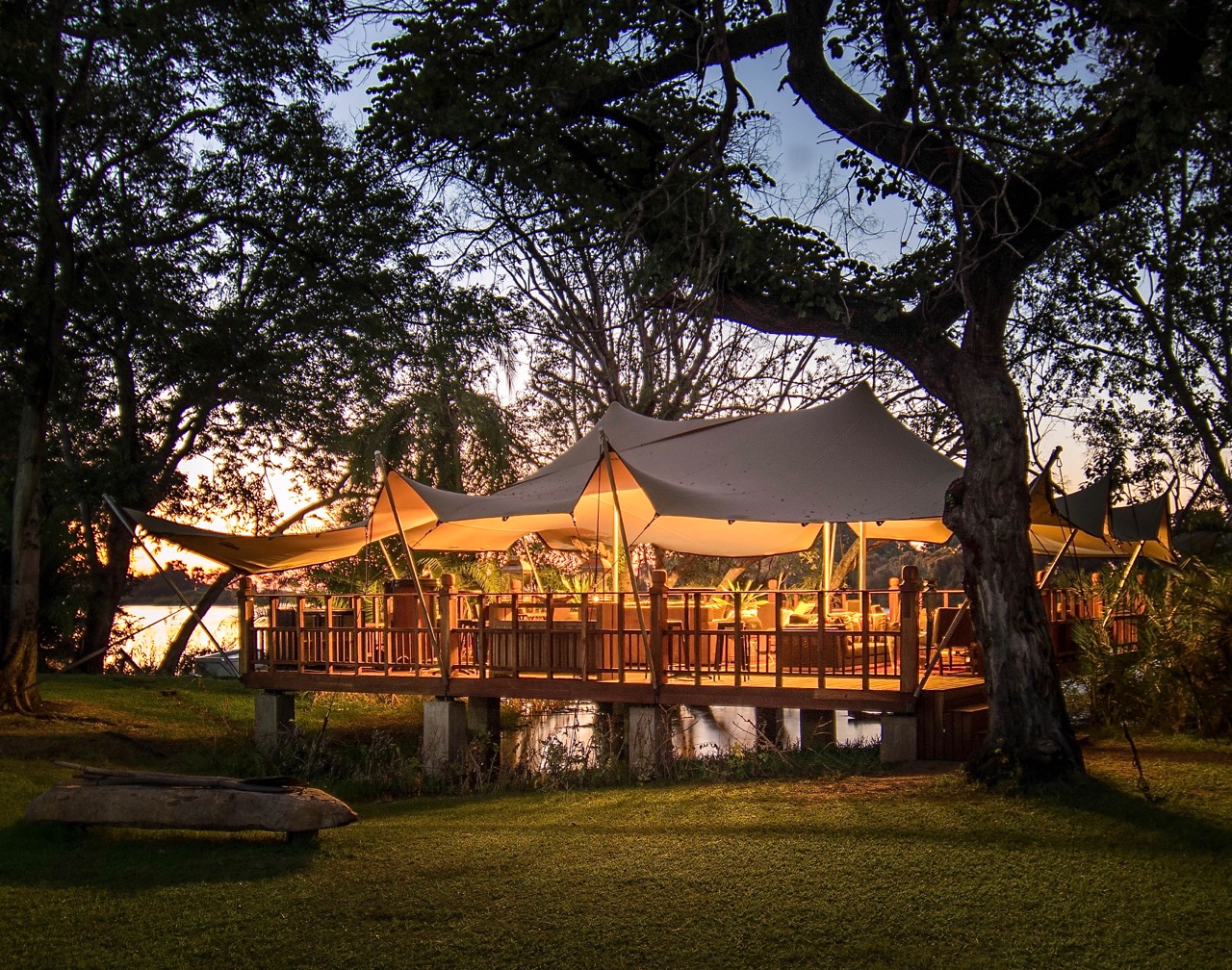
The Elephant Café is located in the Mosi-oa-Tunya National Park, not far from where I too was given succor shortly after Sekuti was adopted by his herd in early 2010. I was living in America at the time, but had traveled to Livingstone to visit my close friend, Chris Aston, after a protracted fight in Washington, D.C. advocating for non-violent democratic change in Zimbabwe, the country in which I, like the elephants, grew up.
Working for nearly seven years with a brutalized Zimbabwean civil society amid death threats, abuse, loss, and trauma, took a mental, physical and emotional toll on me. It was to the kitchen, the garden and the natural world I turned to relax and recuperate. I’d been banned from returning to Zimbabwe in 2002 for my part in steering targeted sanctions, against the country’s political elite, in to law through the United States Congress. At the same time my family’s farm in northern Zimbabwe was stolen at gunpoint. After all this, and having barely survived America’s apocalyptic financial downturn in 2008 in which I almost lost my house, I arrived on Chris’s farm in a state of virtual collapse.
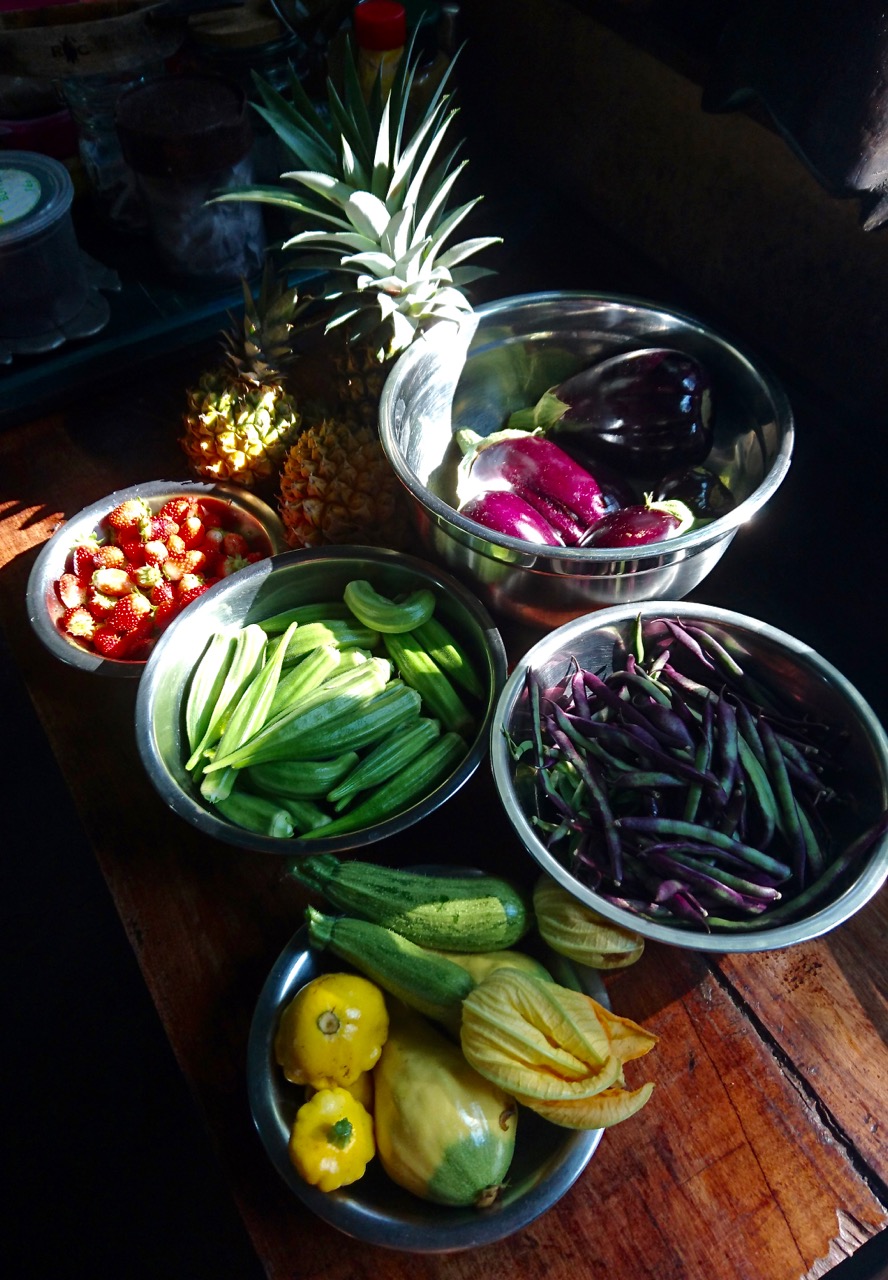
Chris, another Zimbabwean, was himself in a fragile condition. He had also lost his farm under the political dictatorship in 2002. Chris and his partner had crossed the Zambezi River to rebuild their lives in Zambia, and had to borrow 100% from the bank to start again on an unused farm in Livingstone. Two years into this punishing new beginning, his partner was diagnosed with motor neurone disease. She died in 2009, a year before I visited Chris. When we met again for the first time in years, we were the walking wounded.
It was during this week I spent with Chris on his farm that he suggested I take a break from America to return to Africa. The idea appealed to me, but I wasn’t sure where to go. Although I was born in Kenya, we had moved to Zimbabwe when I was six-years-old. My father had died of malaria when I was an infant, and my mother later migrated south to remarry a Zimbabwean farmer.
In Livingstone, Chris and his sensitive, kind ways, combined with long, meditative walks and healthy fresh food, restored me to such a degree that it would take another three years before I acted on his advice.
Food was also a channel through which I witnessed the healing effects of the natural world, thus when I returned to Africa in late 2012, I took a job deep in Botswana’s Kalahari Desert with a safari camp that worked with nomadic San Bushmen. By then, I’d been influenced by the concept of “sufficiency,” a term coined by American inventor, Buckminster Fuller, who believed that “if we looked around us and within ourselves, we would always find what we need.” To me, no way of life exemplified this more than the Bushmen’s. Even though their hunter/gathering existence had been upended and overtaken by the modern world, the people I walked with, and learned from, showed me sufficiency through taking from their meager natural resources only what their bodies needed in that present moment. It is a context which informs the way in which I try to live and work today.
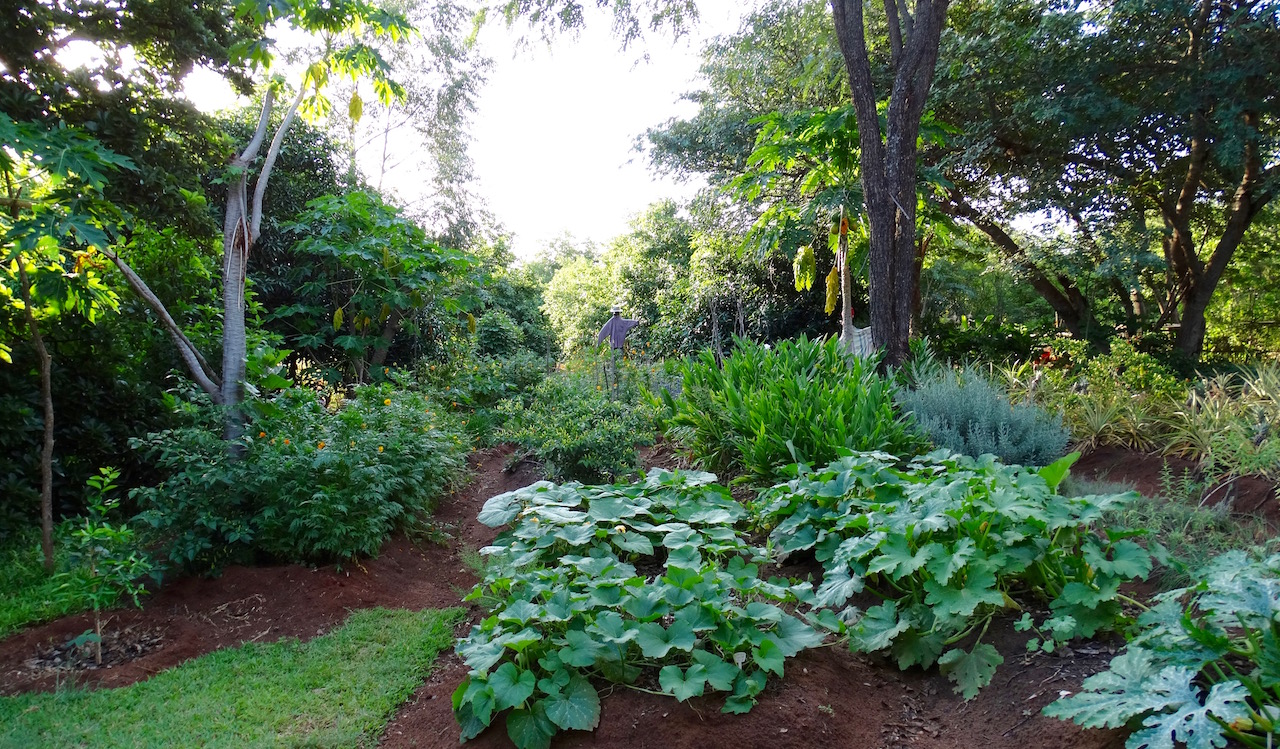
A family tragedy cut short my time in Botswana, but it also brought me back to Zambia, and to Chris on his farm. He suggested I stay with him while I looked for work involving food in Livingstone. Thirty years before, Chris and I forged a friendship over food and writing. He’d studied English literature at university but chose to farm instead, while I’d learned how to cook and went on to become a journalist.
As a cub reporter on one of Zimbabwe’s national newspapers, I was handed a coveted column critiquing the city’s restaurants, not because of my writing skills, but because of my knowledge of food. On one occasion I invited Chris to accompany me to review an upmarket French restaurant in Harare, the country’s capital, and halfway through the meal I challenged him to write the critique for me, to which he agreed. Soon after I had handed in Chris’s review, I was approached by the editor: “Annabel Hughes,” he said with a smile. “Well done. Your writing has really improved.”
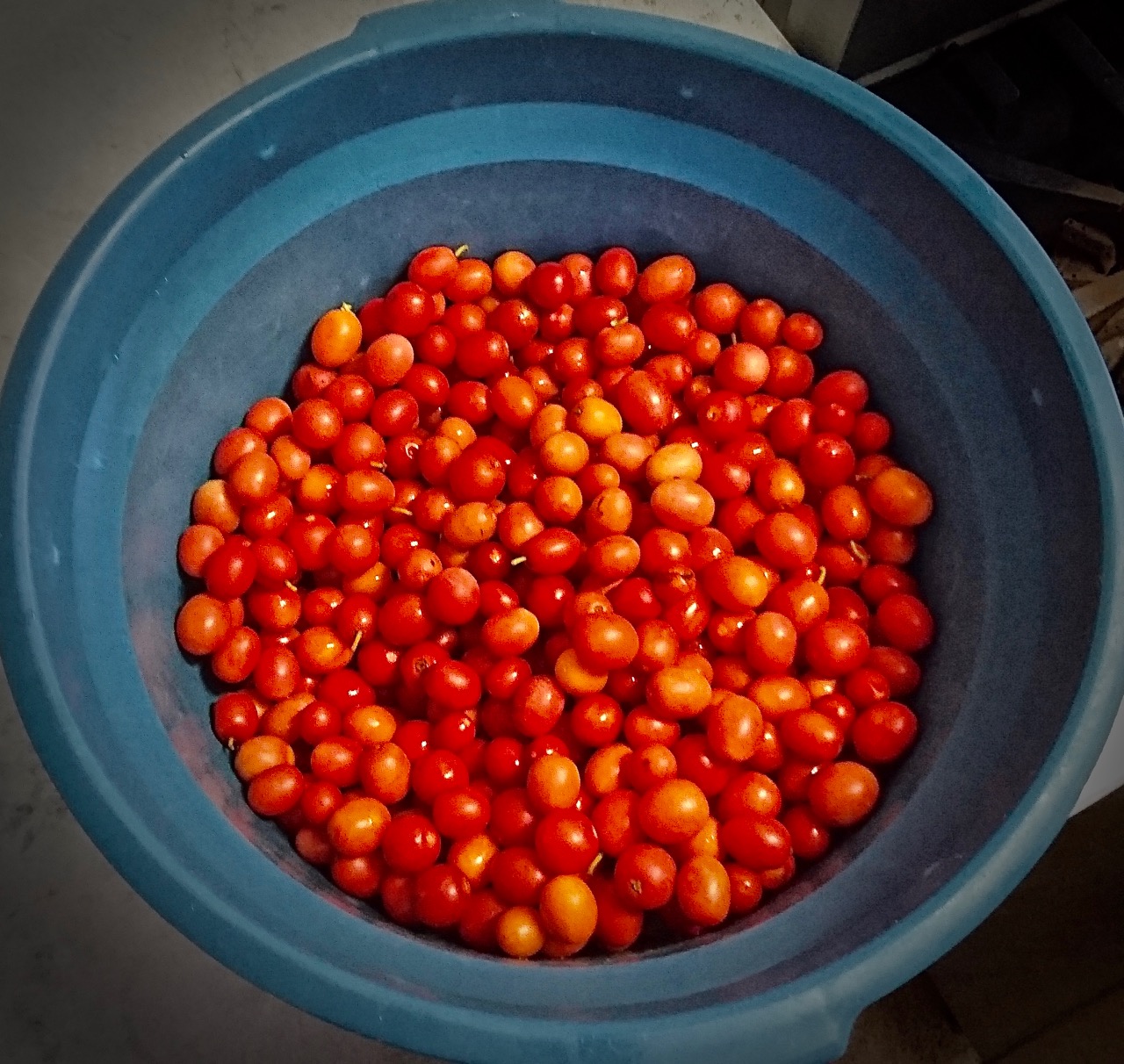
That nascent connection with Chris grew quickly into a deep love after I moved on to his farm. Our healing continues four years on, while the kitchen, the garden, and the natural world play an ever-growing part in our lives. I started my blog, SavannaBel, midyear in 2014 to document my growing repertoire in the kitchen, the creation of our organic garden, and my recipe-testing using seasonal garden ingredients, combined with wild edibles and indigenous foods that have flavors seldom tasted outside Africa.
In April last year I was asked to head up Livingstone’s newest restaurant, The Elephant Café. Sitting only twenty-four people, it is a well-appointed vehicle to showcase the “bush gourmet cuisine” I’ve been developing over the past four years. Guests to the café have the privilege of meeting the elephants, including the now eight-year-old Sekuti, and watching them while they dine. The menu changes according to the fresh food available that day, which is, on the most part, produced or foraged within a 20-mile radius of the restaurant. The response from guests since we opened last July has been one of delight. We were also awarded Zambia’s Best New Restaurant in 2016, just four months after opening.
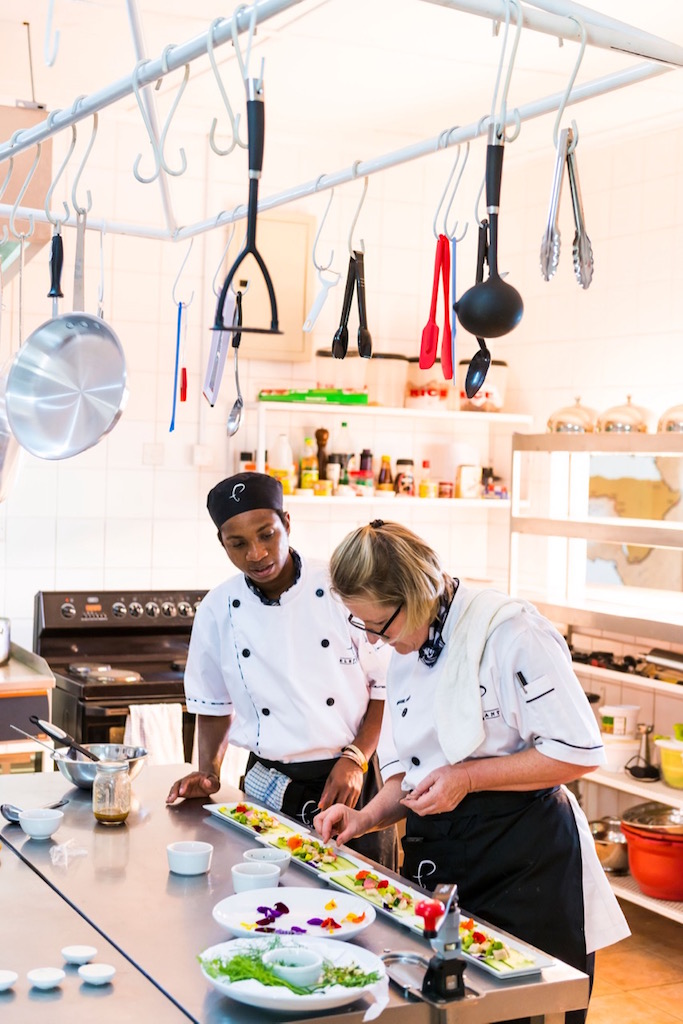
The success, I believe, is a result of a growing collaboration between me and Zambia—both the people and the earth—combined with the elephants. Many of the ingredients I forage for in the wild are also much loved by elephants: mongongo nuts, marula, wild sourplum, baobab and muchingachinga fruit, to name a few. The centuries-old wisdom of our neighboring riverside communities helps us in our foraging for wild food, while the Zambian chefs with whom I work, lead me to the indigenous ingredients in Livingstone’s native markets. As such, it is my sincere hope that by promoting the use of these diverse, and largely unexplored, natural resources, our local economy will also be enriched.
And while we are foraging, picking and cooking, the elephants too are contributing to the quality of our cuisine. We collect truckloads of the processed tons of food they eat in a day to add to our compost heaps that fertilize our organic vegetable garden and fruit orchards. It is a most rewarding synergy.
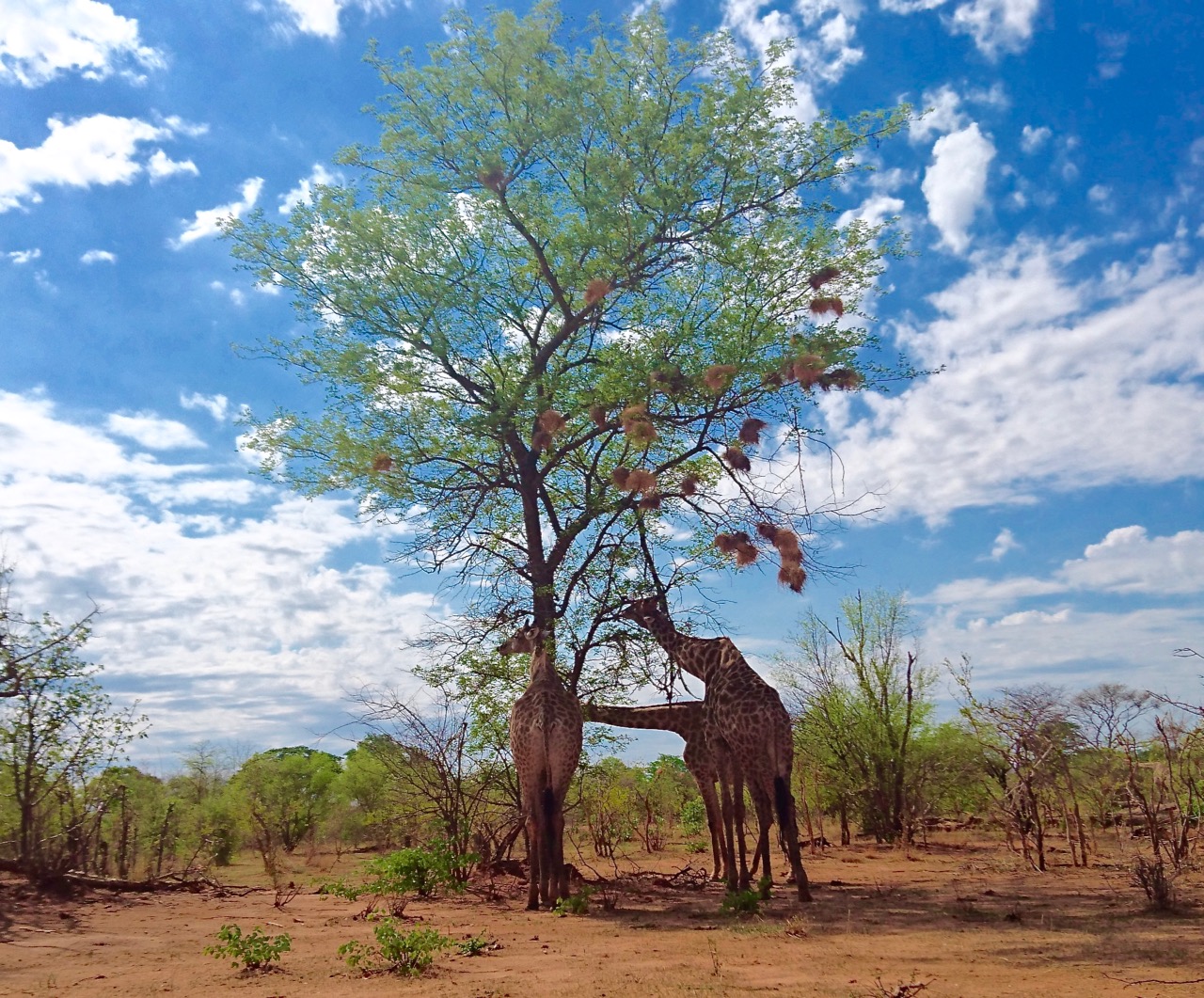
RECIPES:
Inji Masawa Ice Cream with a Mongongo Nut Florentine
Inji Masawa Ice Cream
Yield: 1 liter
Ingredients:
- 450ml double cream
- 150ml whole milk
- 6 egg yolks
- 65 grams/2.3 ounces caster sugar
- 1 cup inji masawa purée (substitute inji masawa with sour cherry or cranberry purée)
Method:
- Put an ice cream container and metal mixing bowl into the freezer. Pour the cream and milk into a heavy-based pan and place over a medium heat. Gently bring up to the boil, stirring occasionally, and then remove from the heat. Set aside.
- While the cream and milk is heating up, beat the egg yolks and sugar together in a medium bowl until the mixture turns pale and thick. Slowly pour the hot creamy milk over the egg yolk mixture, whisking as you do so.
- Return the custard to the saucepan and place over a very low heat. Stir gently in a figure of eight, moving all around the saucepan, until the custard thickens, about 6 to 8 minutes. *Controlled heat is essential at this stage because the custard will quickly turn to scrambled egg if the heat is too high. The custard should be thick enough to lightly coat the back of a wooden spoon, and draw a line through the middle leaving a clear trace.
- As soon as the custard thickens, remove from the heat, pour into the pre-cooled metal bowl and return to the freezer for a few minutes. Don’t leave it in the saucepan, as the heat of the pan will continue to cook the custard.
- When the custard is cool whisk in the inji masawa puree, ensuring it is very well-combined. Pour into an ice cream maker and after the cycle is complete, transfer into the pre-cooled ice cream container and place in the freezer until ready to serve.
Mongongo Nut Florentines
Yield: About 25 florentines (the number will depend on their size).
Ingredients:
- 50g/1/2 cup household flour
- 1/4 tsp salt
- 150g/1 cup raisins
- 200g/1 1/2 cup Mongongo nuts, roughly chopped (substitute with flaked or sliced almonds)
- 120g/4 oz butter
- 160g/3/4 cup caster sugar
- 50ml cream
Method:
- Preheat the oven to 180C degrees, and lightly grease a baking sheet or silplat.
- Sieve the flour and salt into a large bowl, and then mix in the raisins and mongongo nuts.
- Melt the butter and sugar in a heavy-based saucepan over a low heat until the sugar has dissolved completely.
- Remove from the heat and stir in the cream. Add to the flour mixture and combine well. It will resemble a sticky dough.
- Scoop out the mixture a teaspoon at a time onto the baking sheet, pressing it down into an oval as flat as you can. Be sure to leave ample space between each one because the mixture spreads while cooking.
- Bake in the middle of the preheated oven, about 12-15 minutes. (Keep a close eye on them at this critical stage; they burn easily.)
- Remove and cool, quickly reshaping the florentines into circles if they have spread awkwardly. Transfer to a cooling rack, and repeat the process until you have used up all the mixture.
Note: For those following the classic florentine recipe and coating the bottom with dark chocolate: during the florentines’ cooling process, melt about 150 grams of dark chocolate in a heatproof bowl over simmering water. Stir occasionally, remove from the heat and cool until the chocolate has thickened a little. Very gently paint the bottom of the florentine with the chocolate. Allow to cool and set.
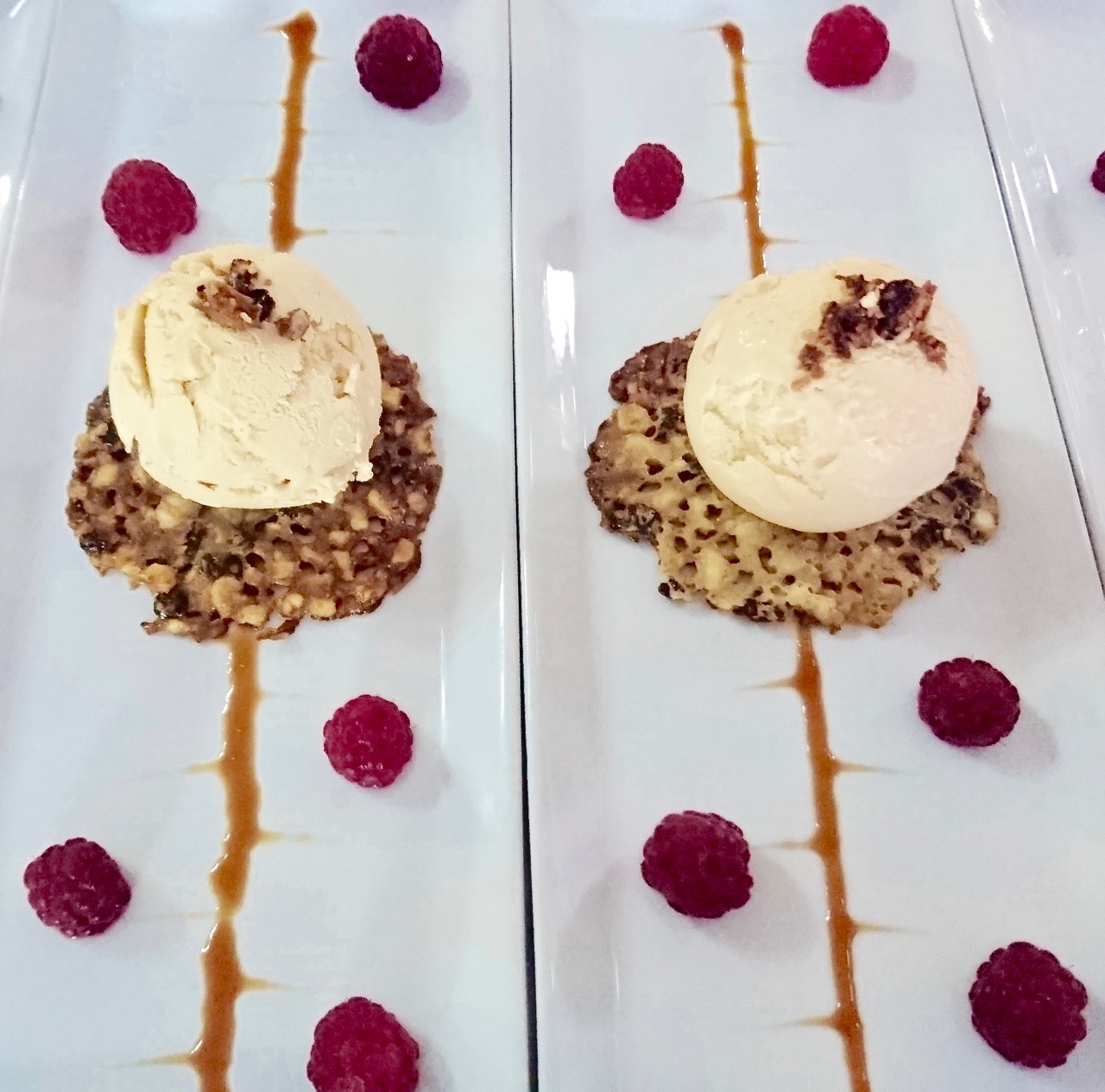

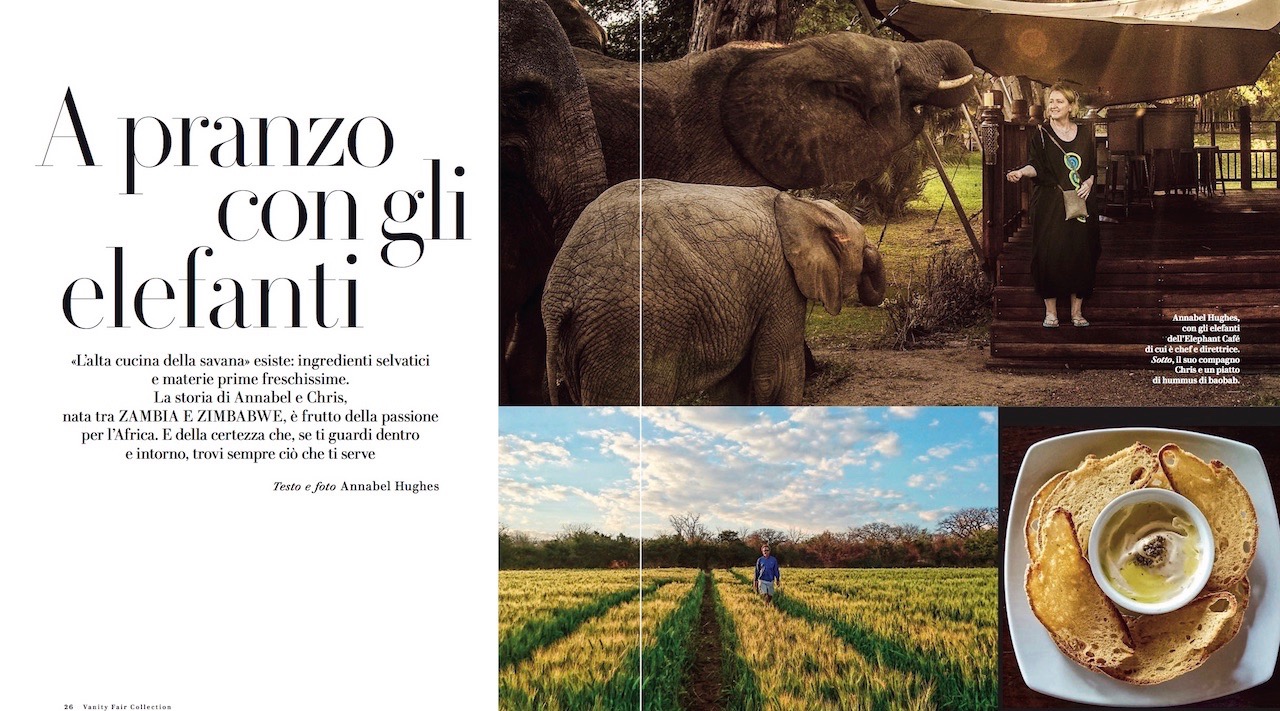
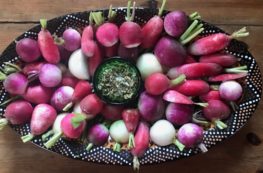
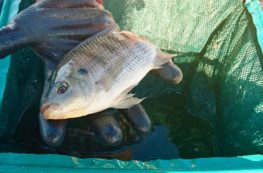

20 Comments
Its a precious piece, and I am glad I have read it. So thank you. Your early experiences are a part of so many people’s in Zimbabwe now. How sad, but a lovely ending.
Much gratitude for your lovely comment.
You have been through hell, but you have landed in heaven. I am so pleased for you, and it is wonderful for you to be so close to those magnificent elephants.
I believe most Zimbabweans in the last two decades have been through hell, dendymactoodle. I’m just so grateful to have been able to start again here in Zambia. Thank you very much for your kind comment … xo
Bravo!!
Thanks, Michelle … 🙂
Nice Story mike p
Thanks so much, Mike! 🙂
What a wonderful and triumphant story, dear Annabel! I so hope to see you there someday! much love, Jen
I look forward to that day, dear Jen. Thank you for your continued interest and support. xo
Great work Annabel, you are on our bucket list! Lots of love Sula xx
I look forward to feeding you one day, Sula! Much gratitude for your continued interest and support! 🙂 Lots of love … xo
This is stunning! You are where you are meant to be … the long and winding road led you there to fulfil your destiny.. you are amazing and deserve to sit, plonked right in the middle of all that goodness and wonder ? And congrats on Vogue ?????
Awww, Mo. Thank you so very much. You’ve provided me with such encouragement, almost from the get-go. For this I am eternally grateful. Lots of love to you … xo
What a poignantly lovely story Annabel. I’m glad you’ve found happiness and joy with Chris and your life in Zambia. So many Zimbabweans have suffered. So looking forward to seeing you soon.
Thank you for this super-kind comment, Fiona. I too really look forward to meeting you at the café soon! 🙂 All the best, Annabel
I know you and Chris but never knew your story. Thank you so much for sharing. Lots of love xx (Ja, I was battling with the Italian version 🙂 )
Thanks, Hellie … so glad you enjoyed the story. Sorry we missed you in Cape Town! Lots of love … xo
by beginning to after I read their blog aim saw, hard to live with wondered how come the United States after Zambia flowed, and I have their courage admired, and now everything has been confirmed they are very strong women and remain hopeful full man.
and they have their fortune I great proud they and cris am even forged very, so, continue as head high, she work more, patience with her that is true,,,(*u*)
Thank you, Nilzeitung! 🙂
Comments are closed.